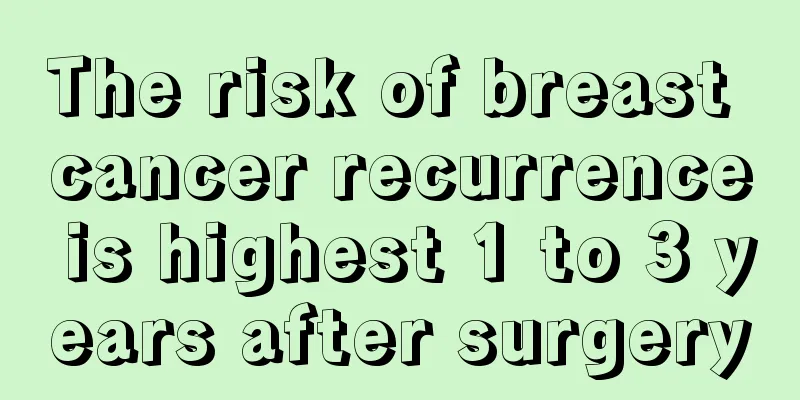The risk of breast cancer recurrence is highest 1 to 3 years after surgery

|
Breast cancer is one of the most common malignant tumors in women. According to statistics, the incidence rate accounts for 7 to 10 percent of all malignant tumors in the body. Its onset is often related to genetics, and the incidence rate is higher in women between the ages of 40 and 60 and before and after menopause. Only about 1 to 2 percent of breast patients are male. It is a malignant tumor that usually occurs in the breast glandular epithelial tissue. It is one of the most common malignant tumors that seriously affects women's physical and mental health and even threatens their lives. Surgical treatment: Surgical treatment is still the only way to cure breast cancer, so surgical removal of the tumor is the preferred treatment for early breast cancer. The surgical methods for breast cancer have undergone a long evolution. In the past, it was believed that the larger the operation and the more complete the resection, the better the effect. However, this view has changed in recent years. It is advocated to reduce surgical trauma as much as possible while ensuring complete resection, and radical mastectomy and modified radical mastectomy have emerged. Risk of breast cancer recurrence is highest 1 to 3 years after surgery Experts believe that the high-risk period for recurrence is within 5 years after breast cancer surgery, and the risk of recurrence is highest within 1 to 3 years after surgery. Breast cancer recurrence can also have other serious impacts: patients with recurrent breast cancer need additional surgery; more drug treatments are needed, and these drugs may have serious side effects; it also brings a huge economic burden, and more importantly, a huge psychological impact on patients and their families. At present, there are still many irregularities in actual clinical work. For example, in the treatment of breast cancer, some non-standard treatment methods are used; in the treatment process, the most appropriate drugs are not selected according to the actual situation of the patient; over-treatment and under-treatment coexist; due to various reasons, patients lack knowledge about the treatment, cannot adhere to the treatment, and fail to complete the necessary course of treatment, etc., which will lead to the recurrence of breast cancer. |
<<: What are the blood test indicators for breast cancer
>>: Is breast cancer likely to recur after 10 years?
Recommend
What's wrong with sweating at the corners of my mouth?
People will encounter some special situations in ...
Can white spots on the face be contagious to other people?
The appearance of white spots on the face may be ...
What to do if my face is allergic, dry and itchy
Both women and men hope that their faces have a r...
What are the symptoms of insufficient gastric motility
Insufficient gastric motility has occurred in man...
What should I pay attention to after getting my eyeliner done
The eyes don't have to be big, but they must ...
What are the symptoms of forest encephalitis
Symptoms of forest encephalitis include fever, he...
Does long-term walking have any effect on the knees?
In order to allow everyone to exercise healthily ...
What is comprehensive rhinoplasty
People who choose to have a rhinoplasty usually g...
What to do during flu fever
Nowadays, the bodies of many people do not meet t...
Where is the best place to treat endometrial cancer
Endometrial cancer is a common disease. This dise...
Which one is more acidic, nitric acid or sulfuric acid?
Nitric acid and sulfuric acid are both acidic sub...
What is the cause of teratoma
What is the cause of teratoma? Many people should...
What's wrong with my eye frame hurting
The eyes are the bridge that connects us to the o...
Taking baths less often can protect your skin better. Those "bad" habits that are good for your health
Everything has two sides. Even the bad habits tha...
There is a bump on the index finger joint
Pimples are not unfamiliar to people. They can be...









